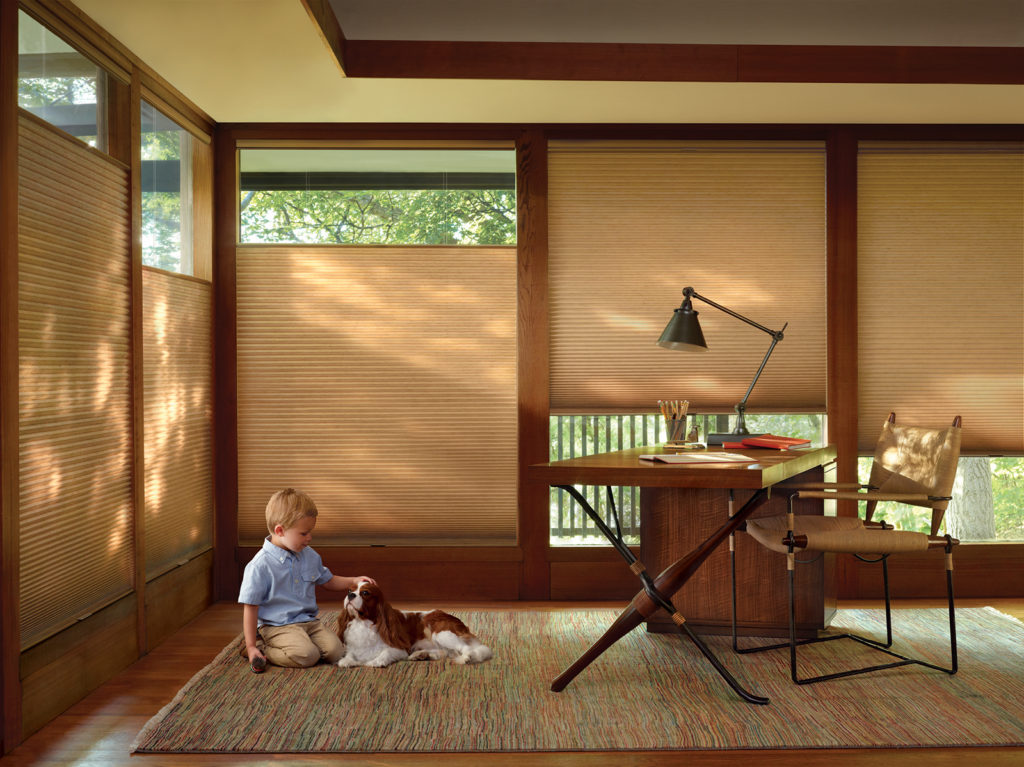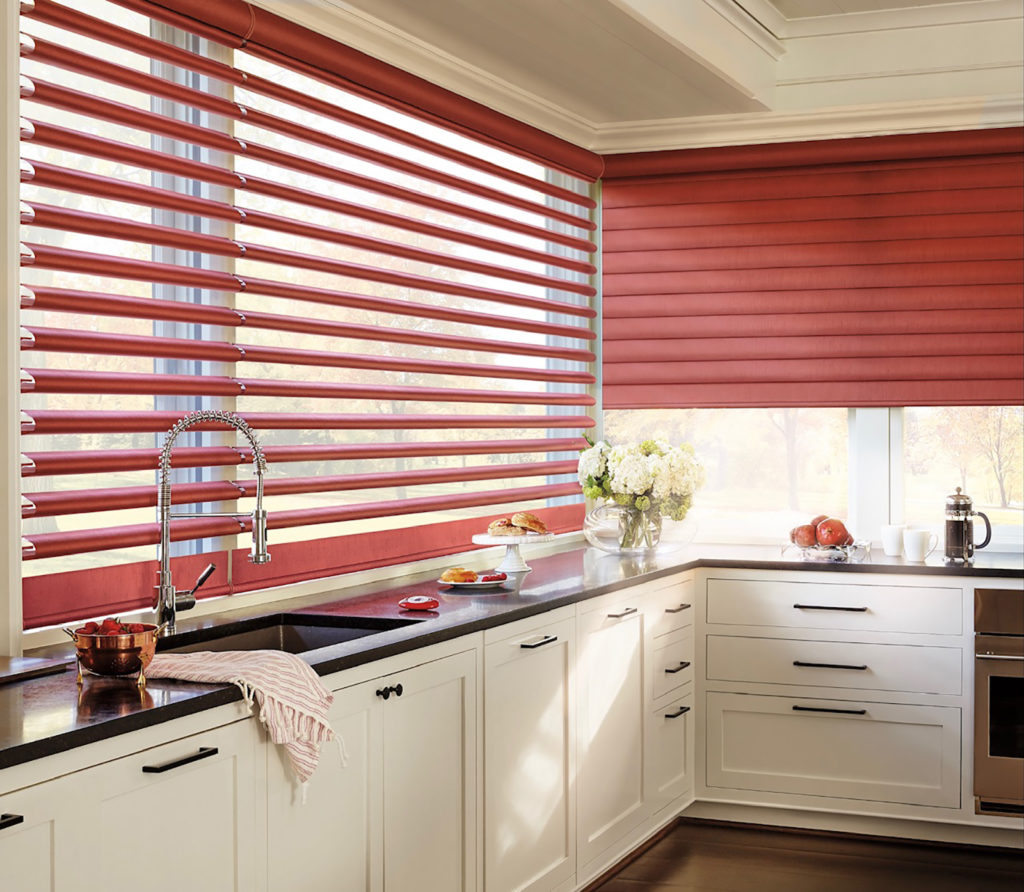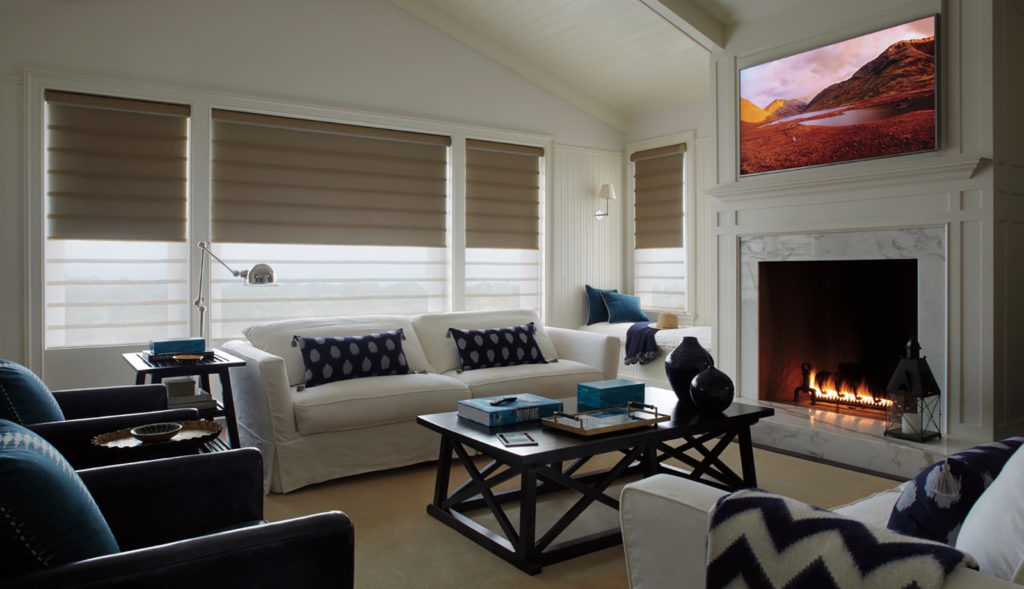By Jill McCullough
Talk about a window of opportunity.
Combine today’s energy-efficient windows with almost any of the countless trends in window treatment design and one could significantly lower heating bills, save energy, increase comfort and stylishly finish a room in one fell swoop.

Joel Herman, third-generation owner of Herman Textile Window Fashions in Highland Heights, says he can hardly contain his excitement when he talks to customers about the benefits of different window treatments.
For example, automated shades can help achieve the right amount of light entering a room; top-down-bottom-up shades offer the perfect mixture of privacy and outside view in the bedroom; fabric treatments with a quality lining add a formal touch while insulating a dining room.
Simply put, each window treatment is chosen based on the customer’s needs and comfort expectations in any given space, Herman says.
“This is such an exciting market because there is such a variety of products … and some can reduce your energy costs by 25 to 35%,” he says.
How do you determine how well the material insulates?
“If you put your hand in between your window and window covering, you can feel the temperature difference,” Herman says. “That is how you know the barrier is an efficient insulator.”

With so many options available, homeowners might want to spend the better part of an afternoon browsing a design store. Deciding between shutters, blinds, shades and drapes is only part of the process. Some other things to consider include remote or automated systems, room-darkening products, soundproofing treatment, and light and temperature control.
Even if a window covering is not necessarily designed with insulation in mind, chances are it is going to improve energy efficiency, says Sharon Agin Rosenberg, president of Earl R. Agin & Associates, a custom window treatment shop in Beachwood.
“Nowadays, most people are buying energy efficient windows. By adding another layer onto the window, you will reduce your heating bills,” says Rosenberg, who prefers Andersen and Pella to other windows, although she does not sell windows at her store.
The trick is to install the window treatment properly so it can serve as a barrier between the cold and the room, she says.
“We use high energy-efficient shades a lot in this business. However, anything on the window will help insulate the room, except for metal blinds,” she says.

Opened, closed or in between?
Window treatments that serve as insulation are an exciting prospect because homeowners can open, close, tilt or see through them while enjoying a well-finished room.
The strategic use of window treatments does more than increase energy efficiency. It saves money, keeps the home cooler in the summer and makes the most of sunny days.
For example, Herman advises his customers lower shades in the summertime to make the air conditioning unit work more efficiently. However, they may need a different strategy for winter.
“In Cleveland, we don’t want to look outside and see the snow and gray clouds of winter, so we close our blinds. It’s an expensive mistake,” says John Marcus, president of Designer Accents at Home, a window treatment contractor also in Beachwood. “When our window coverings are closed or down in the winter, we block out the sun’s warmth and thus cause our heating bills to increase. However, if you open those window treatments and let the winter sun help warm your home … you use less energy.”
On the other hand, homeowners should lower blinds on a cold winter night to help trap heat into a room, he says.

One good option
Rosenberg, Marcus and Herman agree the Hunter Douglas Duette Honeycomb Shade, a cellular honeycomb-shape product, is one of the best insulating shades on the market.
Each cell in the Duette “traps the cold air in the honeycomb pleats and prevents it from making its way into a room,” Marcus says.
“Think of it as putting insulation in the attic … The resistance-to-heat factor is a gauge that tells you how well a product insulates. A cellular shade offers a resistance-to-heat factor that can exceed 7.2, depending on the shade’s size and construction. That means your window is truly energy efficient,” says Herman. “The Duette’s insulation quality is head and shoulders above that of other manufacturers.”
A Hunter Douglas cellular shade is the only one that has ever qualified for an energy tax credit, says Herman, who also likes the Sonnette Cellular Roller Shade, which Hunter Douglas also manufactures.
“It also features cells, and it’s a little more economical,” he says.
